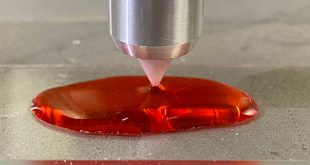Design in any discipline – electronics, mechanical, aerospace, etc. – begins with a specification that captures what the end product should do and essentially drives the entire development cycle. Verification is intended to check that a product, service, or system meets a set of design specifications. Validation is intended to …
Read More »Product Requirements Document (PRD)
The Product Requirements Document or PRD describes all aspects of a new idea required or desired to make its realization a success. The PRD is the bridge between the often vague project briefing and the highly detailed engineering implementation plan. It is also known as the Program Of Requirements (POR), …
Read More »Model-Based Systems Engineering (MBSE) for Satellites and Aerospace
A system is defined by NASA as a construct or collection of different elements that together produce results not obtainable by the elements alone. Systems Engineering (SE) is defined as: The process by which a customer’s needs are satisfied through the conceptualization, design, modeling, testing, implementation, and operation of a …
Read More »Graphene nanoribbons
Graphene is a 1-atom-thick layer of tightly bonded carbon atoms arranged in a hexagonal lattice. Graphene the world’s first 2D nanomaterial, is widely regarded as the “wonder material” of the 21st century due to the combination of its extraordinary properties. As a single layer of graphite, it is the thinnest …
Read More »ERP (Enterprise Resource Planning) systems for Defense and Aerospace
The term enterprise can be defined as describing an organizational unit, organization, or collection of organizations that share a set of common goals and collaborate to provide specific products or services to customers. In that sense, the term enterprise covers various types of organizations, regardless of their size, ownership model, operational …
Read More »Blood Shortage on the Battlefield require new blood transfusion, transportation and manufacturing technologies
Blood transfusion is an essential medical practice that is frequently under the threat of limited availability. Each year, 120 million blood donations are realized in the world, of which 50% are accessible to only 16% of the world population. Even in developed countries, shortages are not uncommon (ex. aging population …
Read More »Product Lifecycle Management (PLM) in Aerospace and Defense
In the electronics industry, the majority of new products are an enhancement of an existing product. Typically new models are developed to be faster, smaller, lighter, or include additional functionality. However, occasionally an innovative, original concept will be conceived to address a gap in the market or to exploit a …
Read More »Transfer of Technology (ToT) best practices and tools.
Technology transfer, or Tech Transfer a.k.a. transfer of technology (ToT), is a process in which technology or knowledge developed at one organization is transferred to another, typically for the purpose of commercialization. Through this process, a donor site (either a product’s sponsor or a manufacturing site) transmits proprietary knowledge …
Read More »Technical risk management
All organizations face uncertainty. The effect this uncertainty has on an organization’s objectives is referred to as “risk.” The challenge for management is to determine how much uncertainty or risk to accept and how to manage it to an acceptable level. Risk management includes the strategies, processes, systems, and …
Read More »Inverse design in photonics
The design of digital circuits is currently dominated by hardware description languages such as Verilog and VHDL. This automation of circuit design has enabled the development of modern computer processors with billions of transistors. Integrated photonic devices, on the other hand, are still designed by hand. A designer first picks …
Read More » International Defense Security & Technology Your trusted Source for News, Research and Analysis
International Defense Security & Technology Your trusted Source for News, Research and Analysis








